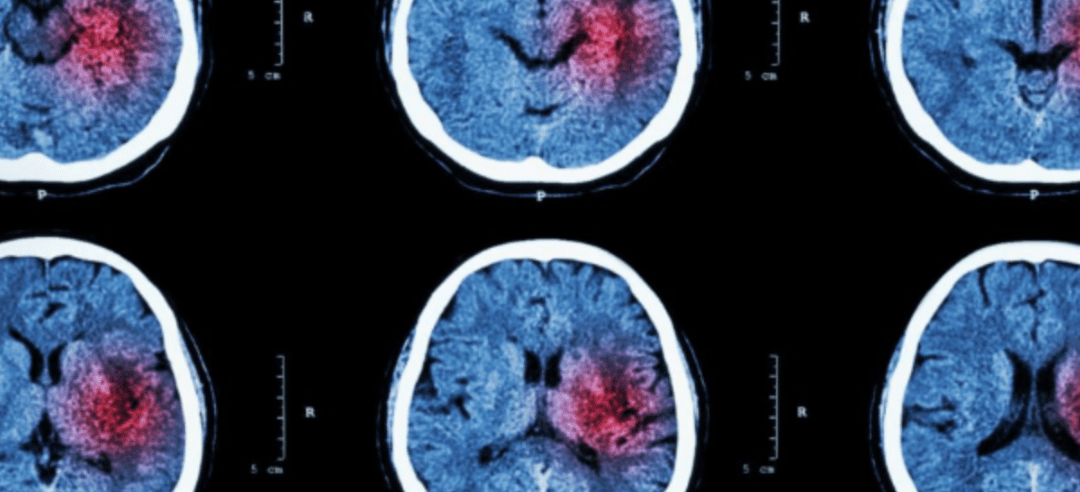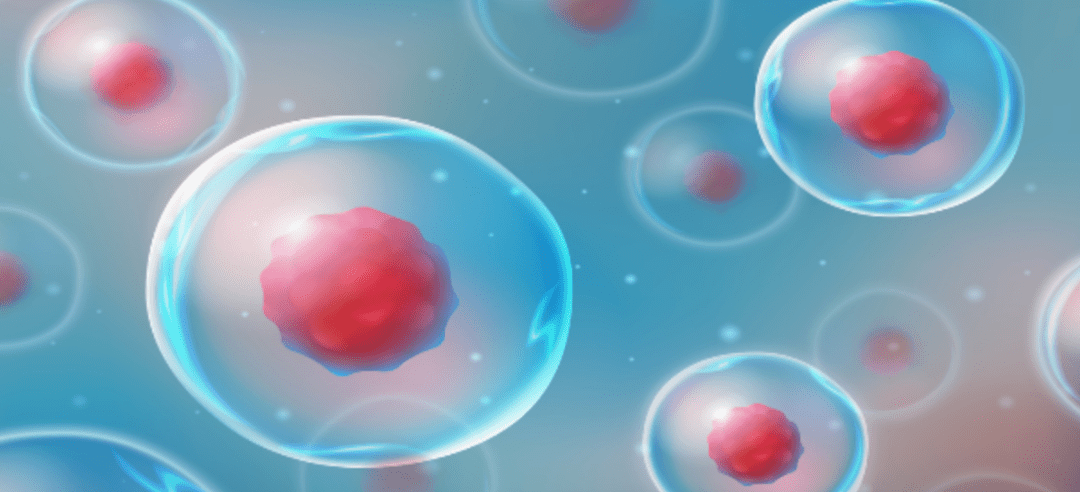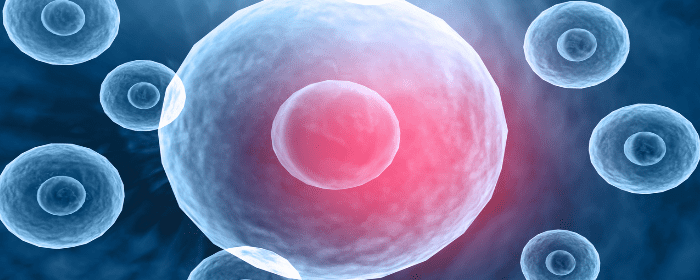
by Stemedix | Sep 12, 2022 | Stem Cell Therapy, Stem Cell Research, Traumatic Brain Injury
Every year, approximately 350,000 Americans experience severe and moderate traumatic brain injuries (TBI) that can result in long-term disabilities. Unfortunately, there are no effective treatments to improve the structural repair and recovery of function in patients who suffer from a TBI. Regenerative medicine methodologies, and stem cells, in particular, offer the most promising options for repairing damage and restoring performance for patients with long-term effects from a TBI. Here we talk about how stem cells help brain injury and the science behind it.
What Are Stem Cells?
Stem cells are special, due to their ability to become new types of cells. The entire human body originated as a cluster of stem cells. Stem cells are the only cells in the body that can divide to create specialized cells, such as brain or blood cells.
Since many specialized cells, like neurons, cannot divide to create new cells, stem cells’ unique ability to differentiate into the needed cells surrounding them allows breakthrough alternative medicine options in patients who previously had no opportunities for recovery.
What Is Stem Cell Therapy?
A physician extracts stem cells from a patient in a stem cell therapy treatment. Those cells often come from the patient’s bone marrow or fat tissue. The doctor then readministers the cells into the targeted areas.
The stem cells begin dividing to create the cells needed to repair the damage and replace dead cells. This process allows stem cells to help manage the root cause of pain, condition, and injury, instead of the traditional approach of managing and masking symptoms.
How Can Stem Cell Therapy Help Brain Injuries?
While neurons cannot divide to create new cells, adult neural stem cells can divide and should have the functionality to differentiate into neurons. In addition, the presence of these cells implies that the brain has some ability to repair itself in response to injuries or diseases affecting the central nervous system.
In the absence of the brain activating this response on its own, scientists are now researching how neural stem cells can help potentially repair a TBI through cell transplantation.
In one study, neural stem cells (NSCs) were transplanted into a damaged area of the subject’s brain and differentiated into region-specific functional cells.
While few studies using humans have reached their final stages, early reports reveal that extracted NSCs may survive for weeks upon injection into an injured portion of the central nervous system. This promising news ensures that stem cells have the time to restore damaged cells and rebuild function after an injury.
While the need for further research and results is clear, early findings offer hope that stem cells may become a widely available option to treat brain injuries. If you would like to learn more about the treatment options available at Stemedix, contact us today! We provide stem cells that help brain injury.

by Stemedix | Sep 5, 2022 | Parkinson's Disease, Stem Cell Therapy
Treating the neurodegenerative disorder Parkinson’s disease can be incredibly challenging. Since the condition’s progression varies widely, there is no standard treatment. Ideally, patients work with their healthcare provider to create a treatment plan tailored to their symptoms. Here we will discuss the current treatments for Parkinson’s Disease.
Most treatment plans include a multipronged approach, combining exercise, therapies, and medications to manage symptoms and slow the condition’s progression.
Exercises for Parkinson’s Disease
Exercise is critical to maintaining balance, mobility, and strength for those with Parkinson’s. When using physical activity to manage Parkinson’s symptoms, patients should combine aerobic, strength, balance, agility, and flexibility exercises.
Many activities incorporate these elements, such as yoga, biking, running, dance, and Pilates.
Therapies for Treating Parkinson’s Disease
Depending on the symptoms a patient experiences, several therapies can assist with mobility, speech, and function.
Physical Therapy
Many Parkinson’s patients are prescribed physical therapy to remain independent. These therapies can retrain the muscles and slow the progression of hypokinesia, or smaller movements that develop as the disease progresses.
Additionally, physical therapy can aid balance, flexibility, strength, and coordination.
Occupational Therapy
Occupational therapy allows those with Parkinson’s to remain active and find new ways to complete tasks that become more difficult as the condition progresses. Patients also learn to use new equipment to stay independent and add ease to movement.
Speech Therapy
Many patients with Parkinson’s experience speech problems such as low speech volume, hoarse or breathy speaking, or lack of pitch. Speech therapy can help with speaking mechanics, using assistive devices, and swallowing concerns.
Medications for Parkinson’s Disease
Currently, the most common medication for managing the symptoms of Parkinson’s disease is a drug called levodopa. The brain converts levodopa to dopamine, helping replace the neurotransmitter’s loss.
Since levodopa can cause nausea, the medication is almost always administered with a companion drug, carbidopa, which manages stomach upset and nausea symptoms.
Unfortunately, levodopa’s absorption is inconsistent because it takes a long path from the small intestine through the blood to the brain. The inconsistency can lead to a rise and fall in the brain’s dopamine levels.
Additionally, the treatment becomes less effective over time, as the cells that convert levodopa to dopamine continue to decline. There are several other medications aimed at reducing Parkinson’s symptoms. However, they all have some limitations.
Surgical Options
Surgical treatments for Parkinson’s disease include deep brain stimulation (DBS) and Duopa.
Deep Brain Stimulation
DBS aims to reduce patients’ movement-related symptoms. In this procedure, a surgeon implants electrodes into the brain. These electrodes deliver electrical stimulation into targeted areas that control movement.
Many patients experience a reduction in symptoms after DBS surgery. However, the amount of reduction varies, and most patients remain on their medications, though in smaller doses.
Duopa
Duopa allows carbidopa-levodopa medication to be administered directly into the intestine via a gel. This methodology improves absorption and reduces the fluctuation of dopamine levels.
Patients require surgery to place a tube in the intestine. Then, a pump delivers Duopa directly to the intestine via the tube.
New Alternative Therapy
Researchers are seeing promising results in investigating regenerative medicine, also known as stem cell therapy, for managing Parkinson’s disease. Early studies offer hope that stem cells will provide a more comprehensive option to manage Parkinson’s symptoms. If you would like to learn more about the treatment options available at Stemedix for Parkinson’s Disease, contact a care coordinator today!

by Stemedix | Aug 22, 2022 | Athletic Injury, Regenerative Medicine, Stem Cell Therapy
When you first suffer from an injury, you focus on assessing damage and dealing with pain. As you start to recover, you may focus on when you can resume your everyday life. Fully recovering from an injury can take substantial time. That timeline lengthens if your tissues aren’t healing properly. A very common question we get is ” Are my tissues healing properly after my injury? “. Here we will discuss injury recovery and what you should expect.
What Should I Expect from Recovery?
Injury recovery has four main stages. These stages often overlap, so multiple parts of the recovery process occur at once.
Stage 1: Bleeding
Internal soft tissues bleed from an injury just like a cut to the skin causes bleeding. Since muscles receive a steady blood supply, muscle injuries tend to bleed more, causing larger, deeper bruising. Other tissues, like ligaments, don’t receive as much blood, so they tend to bleed and bruise less.
At the bleeding stage, a patient’s job is to rest and allow the bleeding to stop. Rest is particularly critical in the first hours after an injury.
Stage 2: Swelling
The area will begin to swell within one to two hours after an injury. Swelling and inflammation are part of the body’s healing response and serve to protect the injured area. While most swelling peaks within three days of an injury, it can persist for a few weeks as you recover.
Stage 3: Scar Tissue
The body starts developing scar tissue within one to two days of experiencing an injury, and this process continues for up to four to six months. Therefore, it’s essential to move and gradually incorporate pain-free, low-impact exercise at this time so your new scar tissue can build with strength and flexibility.
Stage 4: Remodeling or Maturation
The remodeling phase is the longest and final stage of wound recovery, beginning around three weeks after the injury and continuing for up to two years. At this time, collagen synthesis strengthens the surrounding tissue, and the fibers reorganize to reform the injured area.
An injury tends to result in tissues about 80% as strong as uninjured tissue.
How Long Should My Recovery Take?
The length of time an injury takes to heal depends on the injury’s severity, the patient’s age, the type of injury, and several other factors. The time frame for a specific injury to heal is broken out here:
- Broken Bones: Six weeks to three months
- Cartilage: Twelve weeks or longer
- Muscle Injury or Strains: A few weeks to six months
- Tendons: Four to six weeks
- Ligaments: Three weeks to eight months
Regenerative medicine, also known as stem cell therapy, can help facilitate the healing process for specific injuries. Other options, for example, therapies such as Platelet Rich Plasma (PRP) and Peptides can also be used if you’re concerned about the length of time an injury takes to heal. If you are asking yourself ” Are my tissues healing properly after my injury” or you would like to learn more about the treatment options we have here at Stemedix, contact us today!

by Stemedix | Aug 15, 2022 | Stem Cell Therapy
Stem cells are essential in understanding human development, disease, injury, and potential treatments and cures. However, since the initial research on these critical cells began with embryonic stem cells, many people dismiss the benefits of stem cell research and treatment as controversial. Unfortunately, that dismissal ignores what may be of adult stem cells, which are more commonly used in therapies today. Adult stem cells provide the same benefits as embryonic stem cells but with some limitations.
What Are Stem Cells?
Stem cells are unique cells found in the human body that are the only cells that can differentiate into new cell types. Depending on the need, stem cells can divide and create brain, muscle, and blood cells, as well as various other specialized cells in the body. This ability earned them the label of the “building blocks of cells.”
Stem cells may also help repair damaged tissues, allowing them to play a critical role in managing condition and injury symptoms.
What Are the Types of Stem Cells?
There are two primary forms of stem cells – embryonic and adult.
Embryonic Stem Cells
Embryonic stem cells come from a blastocyst, an early-stage embryo before it implants. In the very early days of forming a human, cells reach a blastocyst stage, which occurs about four to five days after fertilization.
Embryonic stem cells are particularly valuable since they can divide unlimitedly under the right conditions. Since these are the very first cells the body forms to make a human, they can become all types of cells. In addition, they are pluripotent, meaning they can become many types of cells.
The embryonic stem cells used in research now come from unused embryos donated from in-vitro procedures.
Adult Stem Cells
Adult stem cells have two main types. One type of adult stem cell comes from tissue inside the body, such as bone marrow, fat tissue, or skin tissue. However, the number of stem cells in these tissues is limited, and they can only differentiate into specific types of cells, making them multipotent, not pluripotent.
Scientists have discovered ways to change adult stem cells in a lab to make them pluripotent, like embryonic stem cells. These are induced pluripotent stem cells, and they still come from adult tissue.
Stem Cell Therapy
Currently, physicians and scientists may use hematopoietic stem cells (HSCs) or mesenchymal stem cells (MSCs) to help manage conditions. HSCs are adult cells found in the bone marrow. Recently, researchers have found strong evidence that HSCs are pluripotent and may serve as the source of most cells in the body. MSCs are a multipotent cell that can differentiate into different tissues in the body and are found in adipose (fat), umbilical cord, and bone marrow tissues.
While the early years of stem cell research focused on embryonic stem cells, researchers are now uncovering the capability of adult stem cells and discovering new and exciting ways to help patients with managing their conditions and injuries with these unique cells. To learn more about the services offered at Stemedix, contact us today!

by admin | Aug 5, 2022 | Spinal Cord Injury, Mesenchymal Stem Cells, Stem Cell Research, Stem Cell Therapy
Spinal cord injury (SCI) continues to be a significant cause of disability. In fact, it is estimated that annual SCIs account for nearly 18,000 injuries in the United States and between 250,000 and 500,000 injuries worldwide[1]. While the main cause of SCIs in the United States continues to be motor vehicle accidents, other contributors include falls, recreational accidents, and complications from medical procedures.
In their attempt to minimize damage after SCI, researchers have proposed several treatment options. This review conducted by Zoehler and Rebellato identifies cell therapy, and specifically treatment with mesenchymal stem cells (MSCs), as the primary form of neuroregenerative treatment for SCIs.
Research has shown that mammals are unable to regenerate nervous cell tissue in an area damaged as a result of a SCI, which means currently they will be subject to permanent disability after suffering such an injury.
Current treatments for SCIs have proven unable to repair the damage, rather they are used to relieve SCI-associated symptoms, including pressure and scarring, while also attempting to reduce hypoxia resulting from edema and hemorrhaging. One such treatment, spinal compression surgery, has shown to be successful at achieving these outcomes with results being much better if the surgery is completed within 24-hours of the SCI.
Another treatment currently used after SCI is methylprednisolone sodium succinate (MPSS) administered intravenously. In addition to inhibiting lipid peroxidation, MPSS inhibits post-traumatic spinal cord ischemia, supports aerobic energy metabolism, and attenuates neurofilament loss. However, because this treatment is associated with gastrointestinal bleeding and infection, it is recommended to be used with caution.
While not yet fully understood, cell therapy – and specifically therapy using MSCs – has presented promising findings related to regenerating tissue after a SCI. It is widely believed that MSCs effectiveness is related to their ability to secrete different factors and biomolecules.
MSCs also reduce inflammation, which is important in this application because inflammation is known to be a secondary event after sustaining initial SCI.
The authors point out that a better understanding of the specific mechanisms related to the regenerative effects of MSCs used when treating SCI is required in order to develop future MSC-based treatments designed to address SCI in humans. Currently, despite the recent increased focus on the use of cell therapy to treat SCI and central nervous system trauma, there is no consensus on a number of essential topics, including cell type, source, number of cells infusion pathways, and number of infusions to achieve this goal.
Zoehler and Rebellato also point out that it’s important to better understand how the reorganization of injured neural tissues associated with MSCS is related to the restoration of neural function.
Numerous animal model and human clinical trials have confirmed the regenerative and neuroprotective potential of MSCs without adverse effects during or after infusion. The authors close this review by highlighting that MSCs continue to demonstrate potential as an alternative for SCI therapy, primarily because the therapy is not limited by the time of injury and has shown measurable improvements in patients with complete and incomplete SCI.
Source: Fracaro L, Zoehler B, Rebelatto CLK. Mesenchymal stromal cells as a choice for spinal cord injury treatment. Neuroimmunol Neuroinflammation 2020;7:1-12. http://dx.doi.org/10.20517/2347-8659.2019.009
[1] “Spinal cord injury – WHO | World Health Organization.” 19 Nov. 2013, https://www.who.int/news-room/fact-sheets/detail/spinal-cord-injury.

by admin | Jul 29, 2022 | Mesenchymal Stem Cells, Stem Cell Research, Stem Cell Therapy
Stem cells, and specifically mesenchymal stem cells (MSCs), have long been considered as a promising therapeutic agent for the treatment of a wide variety of degenerative and ischemic diseases. Over this time, MSC immunomodulation, their capacity for multilineage differentiation, and their ability to self-renew have been well established and are now considered to be clinically relevant.
Considering this, scientists have hypothesized that the therapeutic application of MSCs in immune/inflammatory contexts may be more efficacious than other, more traditional approaches currently used in the field of regenerative medicine.
In this review, Wang et al. specifically focus on the non-traditional use of MSCs as a potential treatment towards immune/inflammatory-mediated diseases and identify important findings and trends in this area of study as they relate to specific immune/inflammation-mediated diseases, including graft-versus-host disease (GVHD), multiple sclerosis (MS), joint diseases [including Osteoarthritis (OA) and rheumatoid arthritis (RA)], inflammatory bowel disease (IBD), and inflammatory airway and pulmonary diseases.
While there have been several promising results indicated in a number of trials using MSC for treatment of GVHD, the same results have not consistently been observed in all trials. One potential reason for the observed difference in results could potentially be a result of heterogeneity observed in conducted trials. Significant observed differences included those between pediatric and adult patients, the type of stem cell transplanted, as well as the MSCs utilized. Interestingly, there has also been a significant difference between results of published trials occurring in Europe (generally positive) compared to those trials occurring in North America (more equivocal results). While MSCs have strong potential for use as a therapeutic agent for GVHD, additional study into patient population and stringent MSC processing criteria are required before consistent and reproducible results are able to be delivered.
As of the publication of this review (2016), Wang et al. identified 23 registered clinical trials using MSCs for the treatment of MS. Additionally, animal models exploring the use of MSCs for the treatment of MS have demonstrated strong therapeutic effects. While many of the clinical trials using MSCs for the treatment of MS were ongoing, several animal models and many additional preclinical studies demonstrated MSCs to have therapeutic efficacy for the treatment of patients with MS.
Since cartilage cannot regenerate, the use of MSCs in treatment of joint diseases are considered a strong therapeutic option for several of these conditions, including OA and RA. Considering that prevention of inflammation and immune attacks on joints must occur in order for the joint repair to occur, and considering the immunosuppressive properties associated with MSCs, MSCs are thought to be well suited for use in the treatment of OA – a thought that has been well supported in both small and large animal studies.
Additionally, several of the 38 clinical trials underway at publication of this review indicated positive results in reduction of OA-induced pain and other related symptoms and for joint repair as observed by cartilage regeneration. On the other hand, similar results have not been observed for RA. The authors point to the detailed mechanistic differences between RA and OA as the likely reason for the observed therapeutic differences observed between the two joint diseases.
The 19 clinical trials and several animal model studies have overwhelmingly demonstrated that MSC therapy is both safe and a highly viable therapeutic option for the treatment of IBD, especially CD fistula formations.
Considering that between 80-90% of MSCs delivered intravenously have been observed to rapidly reach the lungs, MSC therapy has been thought to be particularly well suited for treatment in several pulmonary diseases, including COPD, asthma,emphysema, and even pneumonia. However, while animal models and preclinical studies have demonstrated MSCs to be safe in this application, the 29 registered clinical studies using MSCs for pulmonary disorders have also indicated the application to be safe – but have yet to replicate the efficacy observed and reported in the previously mentioned preclinical animal studies.
The authors of the review conclude that hundreds of clinical trials evaluating the effectiveness of MSC therapy in this application have demonstrated their use to be safe. However, the overwhelmingly positive results reported in preclinical animal studies have not yet been observed through these clinical trials. Considering these findings, Wang et al. call for a better understanding on both the mechanistic properties of MSC Immunomodulation and the pathophysiological details and subsets with specific disease entities as a way to better tailor MSC therapy.
Source: “Human mesenchymal stem cells (MSCs) for treatment towards ….” 4 Nov. 2016, https://www.ncbi.nlm.nih.gov/pmc/articles/PMC5095977/.







 St. Petersburg, Florida
St. Petersburg, Florida
